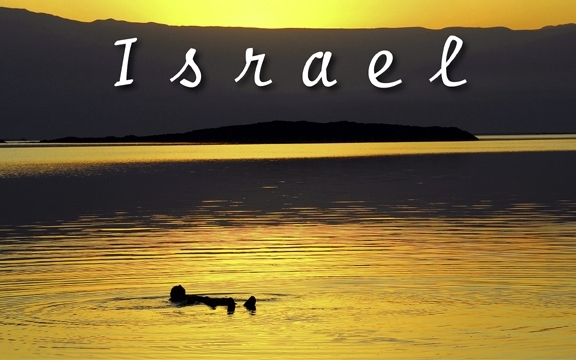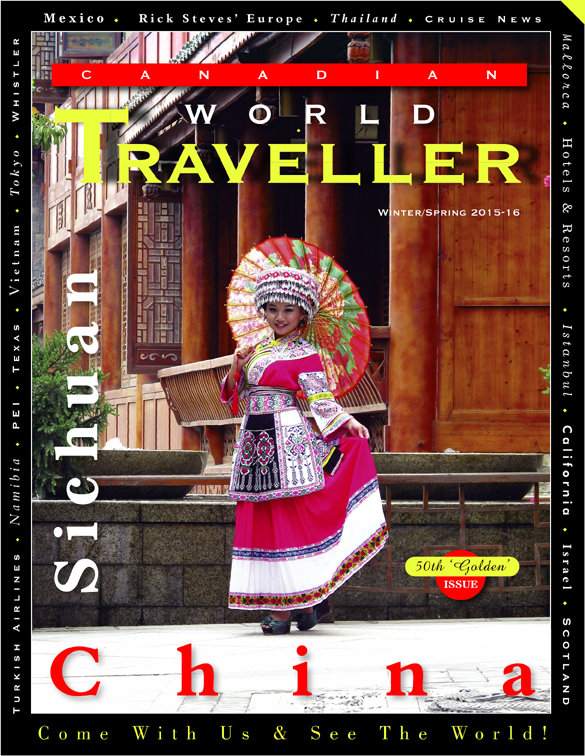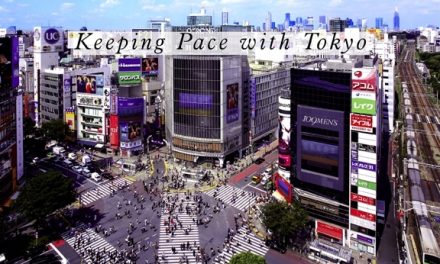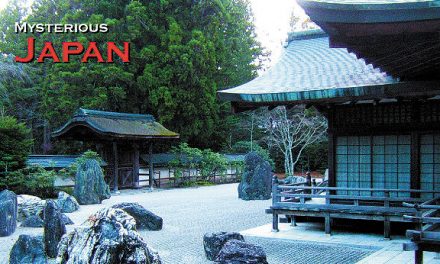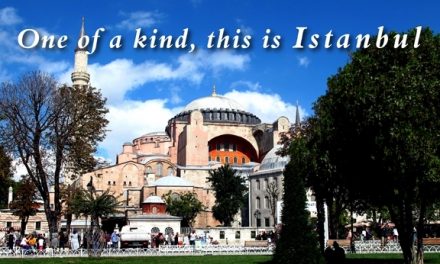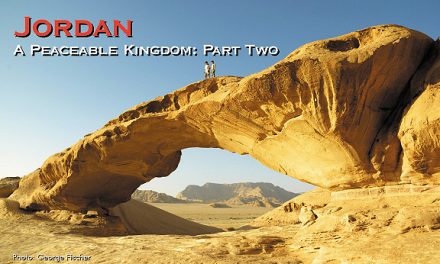Israel
A Dynamic, Reflective Experience
Article & Photography by Steve Gillick

On the last night of our whirlwind six day visit to Israel, I sat on my balcony at the David Citadel Hotel. Before me was the illuminated stone wall of the Old City of Jerusalem and at 6:00 pm the sound of church bells mingled with a muezzin’s call to prayer; a melodious expression of different faiths that has gone on for centuries. It was my first visit to Israel in 25 years and I could not help but think of the expression “The more things change, the more they stay the same”.
Change was evident from the moment we landed. At Tel-Aviv’s Ben Gurion Airport, I was half-expecting to see the old wooden terminal building and not a Moshe Safdie-designed architectural wonder. However, on our way north to Haifa, the place names: Ramat Gan, Herzeliyah, Netanya and the colourful bougainvillea along the super modern highway started to bring back that comfort feeling associated with visiting an old friend.
In Haifa we ascended Mount Carmel for a panoramic view of the city. Before us, comprising a staircase of nineteen terraces, were the Baha’i Gardens with the iconic golden-domed Shrine of the Bab. Across Haifa Bay lay the Crusader city of Akko and beyond that, the white cliffs of Rosh Hanikra where grottos carved out by the Mediterranean Sea rest near the Lebanese border. It’s a reminder not only of the relative small size of Israel (it’s about a 7 hour drive from north to south), but also the fact that every kilometer in the country packs a punch in terms of historical significance and natural wonders.
That evening we had dinner in Haifa’s popular German Colony neighbourhood, where Fady Najjar, the owner of Douzan, explained that the restaurant’s name refers to “a tuned instrument”. He said that Haifa was always a meeting place of different people and cultures: Arabs, Jews and visitors from afar, and like a tuned instrument, the different strings have learned to get along and produce music.
Fady then proceeded to amaze us with an assortment of salads (Lebanese and Halloumi) as well as Kibbeh with lamb and cheese, Eggplant parmesan, shish taouk (grilled chicken with a sesame dip), stuffed grape leaves with yoghurt, and a choice of wine and beer produced in both Israeli and Arab towns. When we departed several hours later, we looked up to see the lights on Mount Carmel: A memorable meal, complemented by a memorable vista of Haifa.
Heading west to the Sea of Galilee, we visited the Mount of Beatitudes where hundreds of pilgrims arrive daily to see where Jesus delivered the Sermon on the Mount. After wandering in the gardens to view the Sea of Galilee, we journeyed on to Capernaum, known as the town of Jesus. Amidst the ruins of the Synagogue where Jesus preached, the stones reveal carvings that depict aspects of life from 2000 years ago: seashells, flowers, grapes, pomegranates, a menorah and the Ark of the Covenant.
In Binyamina, located in the northern wine district, we stopped at Tishbi Winery to meet Golan, the 5th generation owner. With the idea of turning wine tasting into a true culinary adventure, we tasted freshly made breads and macaroons in the bakery, saw the chocolate tasting room where visitors were enjoying samples (flights) of chocolate and learning to pair them with wines, and then, as we passed through the dining area, our host stopped suddenly. `Have you eaten lunch yet? No? Then you must stay and be my guest”. Golan poured glasses of Viognier wine for a toast to our visit, and then brought out an absolutely delicious Red Cabernet to complement the feast that was laid out before us. The motto of the winery is “Friendship is the wine of Life” and Golan certainly demonstrated his passion for realizing this objective.
In the late afternoon we reached Cesarea, a town built over 2000 years ago. We explored the ruins that tell tales from the Roman, Muslim, Crusader and Mamluk conquests, up to the Ottoman Period and the British Mandate. At sunset we joined several dozen locals alongside the Mediterranean, to watch a glorious sunset from the ancient Roman Aqueduct.
We continued on to Tel-Aviv and checked into the Market House Hotel, a boutique property that sits on the Jaffa/Tel-Aviv border. The Jaffa area, once regarded with caution, is now a trendy zone that attracts both millennials and boomers to enjoy outdoor music and conversation at the cafes and pubs. But the area also provides easy walking access to the boardwalk along the Sea, as well as the artist quarters. The next day we dropped into the Ilana Goor Museum, a multi-story eclectic collection of paintings, sculptures, masks and creations by the artist and her contemporaries. In the afternoon we drove through Tel Aviv’s White City, the world’s largest collection of Bauhaus architecture (a UNESCO World Cultural Heritage Site) before settling into Felafix where, for 7 Shekels (about $2.00 US). you get a huge, fresh, falafel in pita with as much tahini and hot sauce as you wish.
And the culinary bliss didn’t stop there. At The Tasting Room we shared a few of the 40 Israeli wines on display with Roni Saslove, the owner and wine maker who studied in Ontario’s Niagara Region. Roni noted that the growing popularity of wine (“one of the beautiful things in Israel”) is based on the fact that “You don’t have to understand it or even how to pronounce it…just put it in your mouth and your body will tell you if you like it or not”.
The evening concluded at the home of Maayan and Moshe Carmel, who are part of the “Eat With” program, designed to introduce visitors to unique foods and warm family experiences. Our hosts were not only exceptionally personable (along with their happy dog, Toffee) but the Persian-style food they prepared was sensational.
But there was more! The next day we drove about 90 minutes to the Dead Sea area where we took the cable car up to Masada, the fortress built by Herod the Great and the site where 960 Jewish zealots took their own lives, rather than live as captives and slaves of the Romans.
Further south we piled into a jeep with guide Barak Horwitz from Camel Lot Tours and bounced and jostled our way up a steep, rocky path to the summit of the lowest mountain on earth. With the Dead Sea sitting at 400 feet below sea level, the Sedom Mountains tower at minus 200 feet. The view from the top is spectacular with the Dead Sea, Jordan and the Moab Mountains in the distance.
And finally on our 5th day we stood on Mount Scopus looking at the city of Jerusalem, spread out before us. We toured the Old City from the Jaffa Gate to the Church of the Holy Sepulchre, and through the tunnels under the Western Wall. We visited Machane Yehuda, the vibrant Jewish Market, as well as the Shrine of the Book, where the Dead Sea Scrolls are housed.
Six days in Israel was only the tip of the iceberg. On my first visit in 1976, I travelled with friends from north to south in six weeks and still didn’t see all the natural wonders, small towns and all the attractions that the country offers. But without doubt, this was a great taste of what Israel has to offer and certainly a prologue to future visits to discover more about the people, food, art, architecture, history and traditions of such a dynamic travel destination.
www.goisrael.com
Click on cover to view published article

